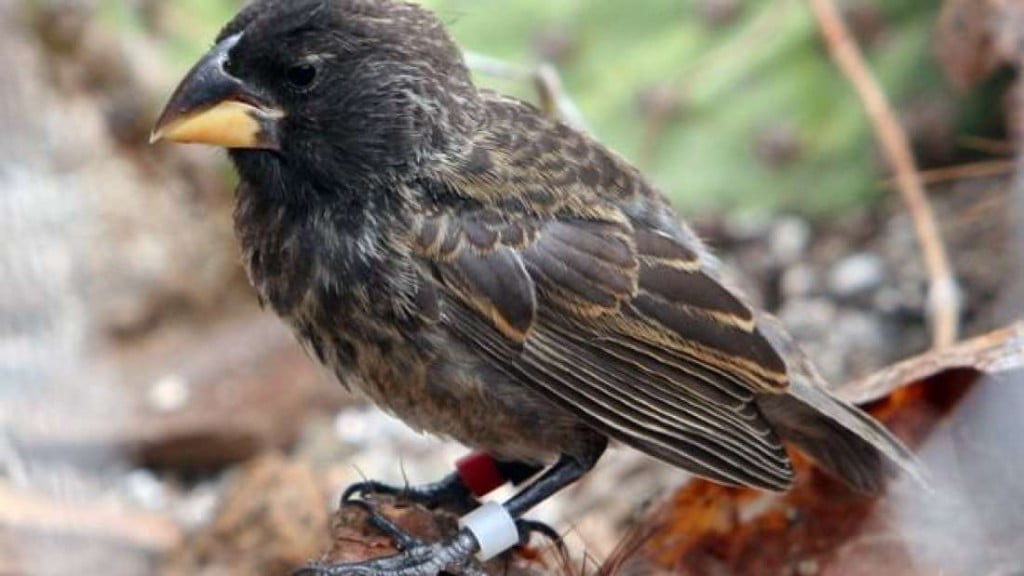Discovery of New Species of Darwin Finches

Darwin
Darwin’s finches, also known as the Galápagos finches, are a group of about fifteen species of passerine birds. These birds were first collected by Charles Darwin on the Galápagos Islands during the second voyage of the Beagle.
These birds are classified into the subfamily of Geospizinae or the tribe Geospizini, and are different from the other finches due to the diversity in its beak formation and function.
The diversity in the species of the finches has helped Charles Darwin to establish his famous theory of evolution by means of natural selection, which means that with the help of mutations, species can become better adapted to the environment and these mutations are passed down to the subsequent generations.
The evolution of bacteria is so fast that microbiologists can see and record their evolution. But these types of chances come seldom to vertebrate zoologists.
In recent time scientists have been able to observe the evolution of a completely new species, that too, in the wild and in real time. Moreover, the evolution had just taken two generations to complete.
The results of the genomic sequence and the analysis of all the physical characteristics have proved that it is a new species of the Darwin finch.
The discoverers have nicknamed the bird as Big Bird and the bird is endemic to a small island called Daphne Major in the Galápagos.
According to the discoverers, two different species have come together, mated and created an entirely new species of Darwin’s finch through the process of species hybridisation.
The evolution of the new Darwin finch was observed by Dr. Peter Grant and Dr. Rosemary Grant, two biologists of Princeton University.
At first, they were hesitant to claim that it was a new species and thought it to be a variant of an existing one. But later with more observations and study, they announced the arrival of a new species of Darwin finch through their research paper which they had published.
The story of the evolution began in 1981 when an unusual male bird with a distinctive beak arrived on Daphne Major.
Previously the island was inhabited by native finches, namely Geospiza fortis, the medium ground finch. But this big bird was a non-native interloper, Geospiza conirostris, also known as the large cactus finch, which lived on other Galápagos Islands, namely Española, Genovesa, Darwin and Wolf.
According to Peter Grant, “We didn’t see him fly in over the sea, but we noticed him shortly after he arrived. He was so different from the other birds that we knew he did not hatch from an egg on Daphne Major”.
The newcomer male had a different song and quickly stood out from the others. Later it mated with two native females and produced offspring.
The beaks of the native finches were adapted to eat either large or small seeds. But the beaks of the hybrid species were suited to eat all sizes of seeds along with cactus nectar that only some other species can reach.
Mating between different species is not an unusual matter. Famous examples include mules, cross between a male donkey and a mare; and a liger, cross between a male lion and a female tiger.
Often the hybrid species turn to be sterile. But this was not the case with the Darwin finches. The Galápagos finches chose their mates based on the size and shape of their beaks.
But after reproduction the new hybrid species were completely isolated and as a result they started mating with its own kind in order to survive. But it was a difficult task.
During the droughts on the island in 2002-2003, when the new lineage was in its fourth generation, all but two of the birds died.
According to Dr. Rosemary Grant, “When the rains came again, the brother and sister mated with each other and produced 26 offspring. All but nine survived to breed− a son bred with his mother, a daughter with her father, and the rest of the offspring with each other− producing a terrifically inbred lineage.”
Gaining from its bigger size than the native populations, the hybrid finches got previous access to food choices and hence survived. When the Grants visited the island in 2013, they counted 23 individuals and 8 breeding pairs of the birds.
This revelation proved that past hybridization among Darwin finches might have occurred many times. This could have resulted in the birth of a new species, which might have become extinct or might have survived to become the species that we know of today.
Source :- iflscience
For More information Check our other category below :-
